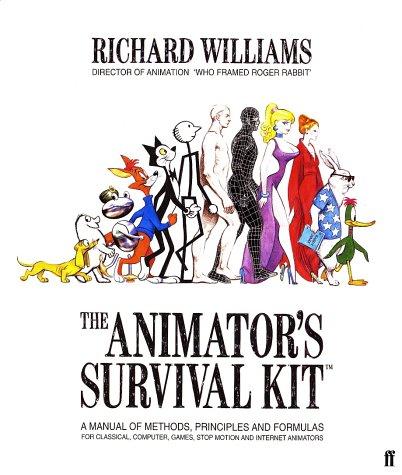
Pavel Pudlák《Logical Foundations of Mathematics and Computational Complexity》
书刊介绍
内容简介
The two main themes of this book, logic and complexity, are both essential for understanding the main problems about the foundations of mathematics. Logical Foundations of Mathematics and Computational Complexity covers a broad spectrum of results in logic and set theory that are relevant to the foundations, as well as the results in computational complexity and the interdisciplinary area of proof complexity. The author presents his ideas on how these areas are connected, what are the most fundamental problems and how they should be approached. In particular, he argues that complexity is as important for foundations as are the more traditional concepts of computability and provability. Emphasis is on explaining the essence of concepts and the ideas of proofs, rather than presenting precise formal statements and full proofs. Each section starts with concepts and results easily explained, and gradually proceeds to more difficult ones. The notes after each section present some formal definitions, theorems and proofs. Logical Foundations of Mathematics and Computational Complexity is aimed at graduate students of all fields of mathematics who are interested in logic, complexity and foundations. It will also be of interest for both physicists and philosophers who are curious to learn the basics of logic and complexity theory.
作品目录
1 Mathematician’s World ......................... 1
1.1 Mathematical Structures....................... 2
1.2 Everything Is a Set.......................... 25
1.3 Antinomies of Set Theory ...................... 36
1.4 The Axiomatic Method ....................... 43
1.5 The Necessity of Using Abstract Concepts . . . . . . . . . . . . . 54
Main Points of the Chapter ........................ 64
2 Language,Logic and Computations .................. 65
2.1 The Language of Mathematics.................... 66
2.2 Truth and Models .......................... 80
2.3 Proofs ................................ 92
2.4 Programs and Computations.....................123
2.5 The Lambda Calculus ........................146
Main Points of the Chapter ........................155
3 Set Theory.................................157
3.1 The Axioms of Set Theory......................159
3.2 The Arithmetic of Infinity......................176
3.3 What Is the Largest Number? ....................196
3.4 Controversial Axioms ........................215
3.5 Alternative Set-Theoretical Foundations . . . . . . . . . . . . . . 231
Main Points of the Chapter ........................253
4 Proofs of Impossibility..........................255
4.1 Impossibility Proofs in Geometry and Algebra . . . . . . . . . . . 256
4.2 The Incompleteness Theorems ...................272
4.3 Algorithmically Unsolvable Problems. . . . . . . . . . . . . . . . 300
4.4 Concrete Independence .......................319
4.5 The Independent Sentences of Set Theory. . . . . . . . . . . . . . 340
Main Points of the Chapter ........................364
5 The Complexity of Computations....................365
5.1 What Is Complexity? ........................366
5.2 Randomness, Interaction and Cryptography . . . . . . . . . . . . . 410
5.3 Parallel Computations........................437
5.4 Quantum Computations .......................448
5.5 Descriptional Complexity ......................479
Main Points of the Chapter ........................493
6 Proof Complexity.............................495
6.1 Proof Theory.............................496
6.2 Theories and Complexity Classes..................523
6.3 Propositional Proofs.........................540
6.4 Feasible Incompleteness.......................562
Main Points of the Chapter ........................580
7 Consistency,Truth and Existence....................583
7.1 Consistency and Existence......................584
7.2 The Attributes of Reality ......................609
7.3 Finitism and Physical Reality ....................646
Main Points of the Chapter ........................664
Bibliographical Remarks ...........................667
References .
相关推荐
-

《Observing the User Experience》书籍《Observing the User Experience》
Thegapbetweenwhodesignersanddevelopersimaginetheirusersare,andwhothoseusersreall...
-

京津冀区域发展报告(2012)
《京津冀区域发展报告(2012)》内容简介:《京津冀区域发展报告(2012)》分为综合篇、区域篇和专题篇。其中,综合篇从总结京津冀
-

向NASA学工程师文化
《向NASA学工程师文化》内容简介:太空探索既是一个关于探索和发现的故事,也是一个关于领导力和团队合作的故事。本书深入探讨了NA
-

《Recommender Systems Handbook》书籍《Recommender Systems Handbook》
Theexplosivegrowthofe-commerceandonlineenvironmentshasmadetheissueofinformations...
-

Web安全实践
Web安全实践 内容简介 本书提供了有效的、经过验证的解决方案,以修补端到端网络安全架构中的Windows Web服务器和浏览器的常见脆弱之处。本书分为5个部分...
-

工业软实力
《工业软实力》内容简介:本书由工业和信息化部政策法规司组织国家工业信息安全发展研究中心、中国信息通信研究院、中国电子信息产
-

《软件加密与解密》书籍《软件加密与解密》
内容简介:对抗软件盗版、篡改和恶意逆向工程的理论、技巧和工具近十年来,人们在软件防盗版和防篡改技术的研发上取得了重大进展
-

深度学习从入门到实战
深度学习从入门到实战 本书特色 深度学习:从入门到实战摒弃了枯燥的理论推导,以大量实战应用案例及知识模块等内容帮助机器学习领域的初、中级程序员踏实通过深度学习的...
-

《自动机理论、语言和计算导论(英文版.第3版)》书籍《自动机理论、语言和计算导论(英文版.第3版)》
本书是关于形式语言、自动机理论和计算复杂性方面的经典教材,是三位理论计算大师的巅峰之作,现已更新到第3版。书中涵盖了有穷自
-

Android 7应用程序开发教程
《Android 7应用程序开发教程》内容简介:Android系统是目前最为流行的智能手机操作系统之一,面向Android系统的应用开发是目前的技
-
![[美] 威肯斯《人因工程学导论》](http://oss.shudanhao.com/caiji/chazidian/2023/2896.jpg)
[美] 威肯斯《人因工程学导论》
人因学作为一门新兴的学科,在当今工业设计领域越来越受重视,这本《人因工程学导论》的主要意图是对人因学原理进行清楚直观的说
-

史学史研究的理论与实践
《史学史研究的理论与实践》内容简介:本书汇集作者对于史学理论与史学史的部分论述,分为四章,即“史学理论探析”、“史家史书考
-

游泳运动身体训练指南
《游泳运动身体训练指南》内容简介:优秀的身体素质是技术水平得以良好发挥的必要支撑。本书针对游泳运动,提供了适合手臂、肩部、
-

零基础学平面广告设计
《零基础学平面广告设计》内容简介:本书介绍平面广告设计以及应用案例,内容包括平面广告设计原理,平面广告设计基础,平面广告设
-

布鲁林克《jQuery Mobile快速入门》
作为jQueryMobile的入门级读物,BradBroulik所著的《jQueryMobile快速入门》以示例方式讲解了jQueryMobile的基本知识和核...
-

《The App & Mobile Case Study Book》书籍《The App & Mobile Case Study Book》
ThemobilerevolutionFindouthowtomakethemostofitThisguidefocusesonwhatisamustforal...
-

《GDI+程序设计》书籍《GDI+程序设计》
.NETFramework的出现给编程带来了极大的改变,图形编程也同样受到了巨大的影响。微软在.NET中把GDI升级为GDI+,它包含了许多命名
-

游戏架构:核心技术与面试精粹
《游戏架构:核心技术与面试精粹》内容简介:本书从架构与封装、艺术资源、底层核心、自定义扩展和独立游戏五个方向组织内容,每一
-

超级国宝:全2册
《超级国宝:全2册》内容简介:本书由喜马拉雅艺术畅销榜前列、评分9.8分的音频节目《国宝来了》结集而成。50位中国一级博物馆的主
-

法治无禁区
《法治无禁区》内容简介:本书是作者在一线办案的思考与总结,紧密结合当下的司法改革实践,与*前沿的司法理念接轨。不忘初心,面向





